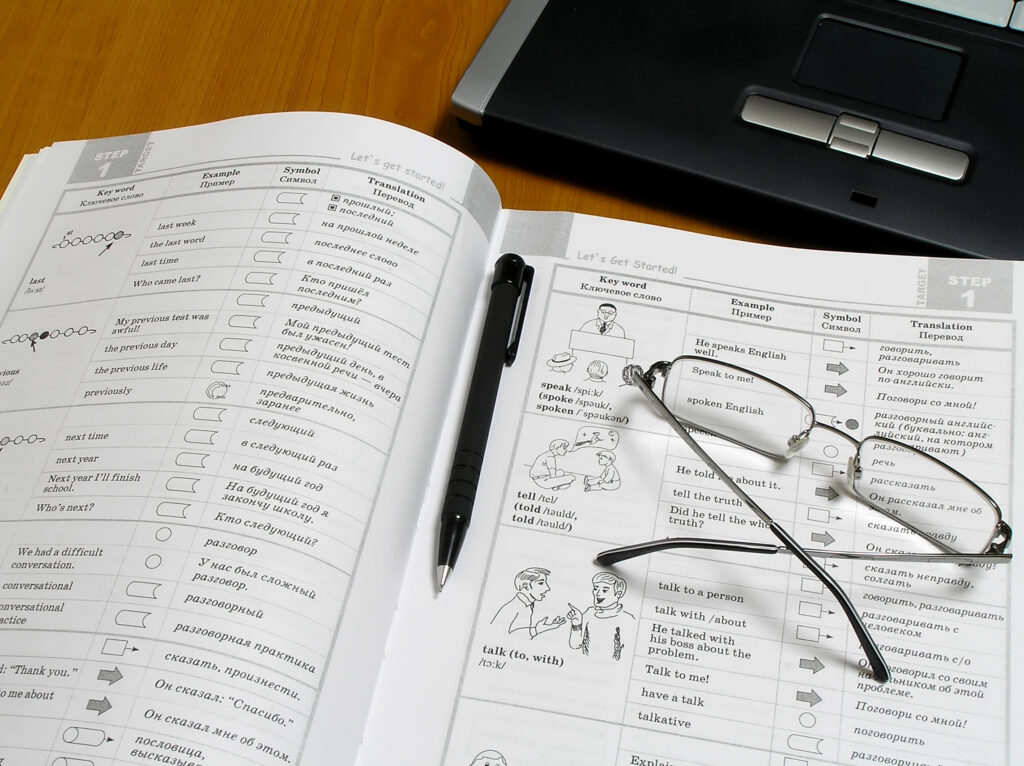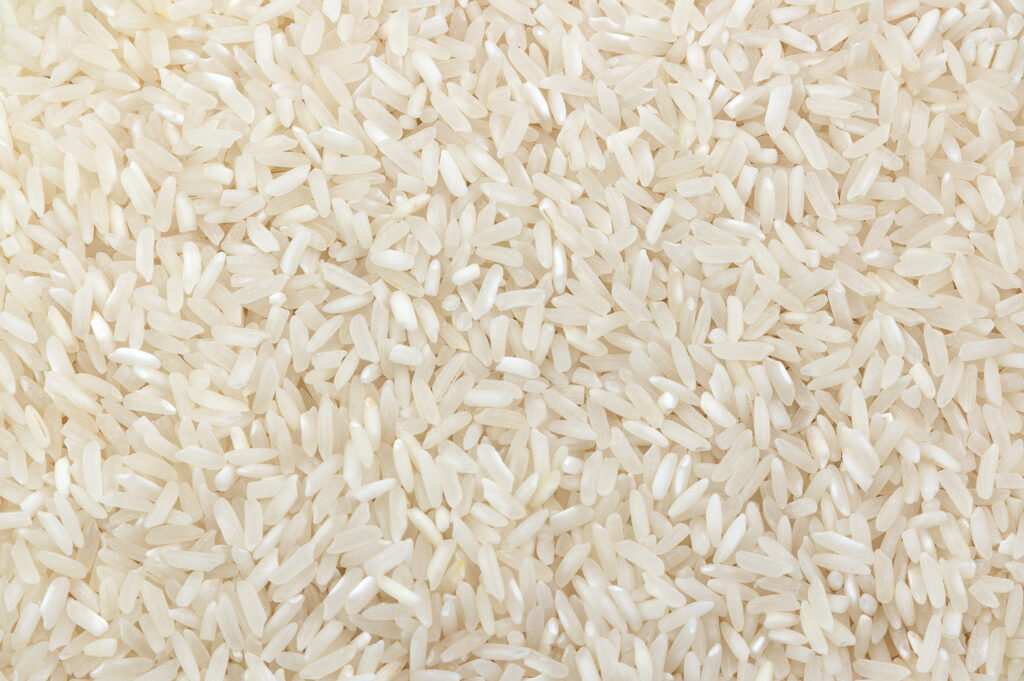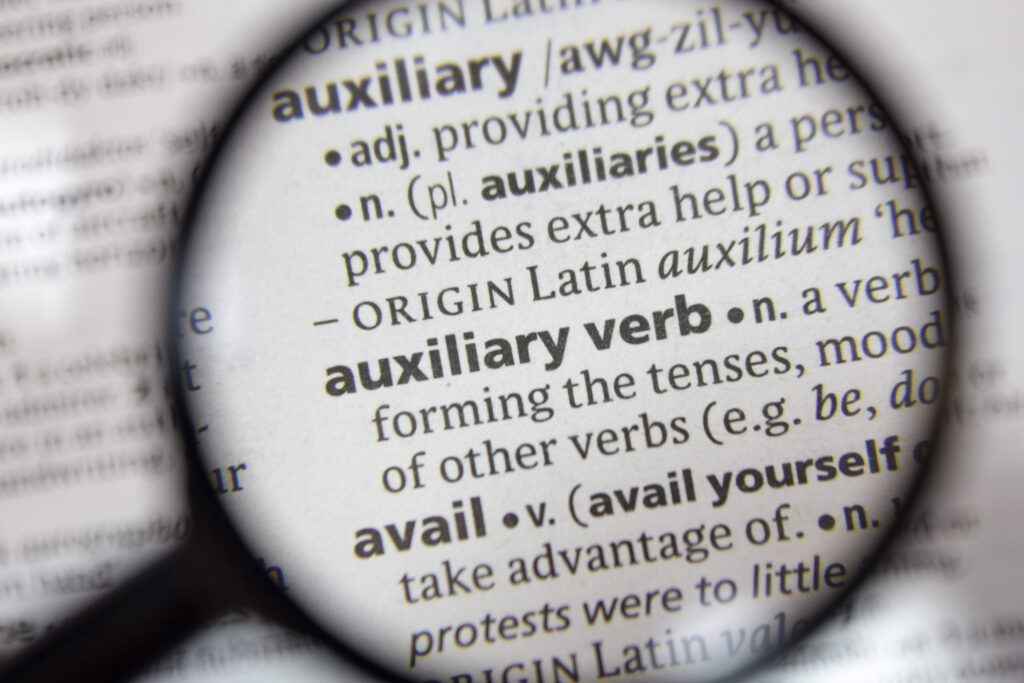Hello lovely students! I have a treat in store for you today. Do you find that you sometimes slip up in English? Do you want basic English grammar rules to be more transparent? And would you like a simple guide on some of the basic rules to remember in English?
If all the above is you, then I am delighted to let you know that I’ve come up with this article to give you a basic understanding of my native language, English. I have divided it into nouns, tenses and verbs, adjectives and adverbs, and sentence structure to make it more bite-sized.
It has never been made so easy, and I’m so excited to share it with you to help you on your English journey.
Are you eager to find out more about this grammar guide?
Let’s get started then.

Nouns
1) Articles
There are only two types of articles in the English language. Yup, you’ve read that correctly. These articles are the definite article (the) and the indefinite article (a/an). Articles are used before nouns to show whether something is specific or general.
The definite article is the. This is a specific article. We use the before nouns to refer to a thing or person already spoken about or known about. We can use the for plural and singular nouns.
For example, if you and your friends were talking about a dress you had seen, you would refer to it as the dress later in the conversation.
Let’s look at this scenario.
A: I saw a lovely dress in the window in town. I might go and get it.
You then walk to town and buy the dress. You go back home to announce you have got it.
A: I bought the dress!
See how the article changes to illustrate that the noun is specific?
We also use the at the beginning of superlative adjectives (but more on that later).
There are two indefinite articles that we use in English: a and an. These are general articles as they demonstrate general nouns. We use a/an like number one. Therefore, they are used for singular nouns.
An is used for nouns beginning with vowel sounds (a,e, i,o,u). A is used for nouns starting with consonants (all the other letters in the alphabet).
Look at the example of the dress above. In the beginning, I used a dress in the example because it was a general noun (we did not know what dress was) and because dress starts with a consonant.
If I wanted to use the word apple in my sentences, I would say an apple. This is because the word apple begins with a vowel.
There is, of course, two exceptions to the rule. When a word begins with the prefix uni, we use a as we do for consonants rather than an.
A university.
A universe.
A unicorn.
We do not use an with uni.
We also use an a with words that begin with with u that sound like y in you such as a U.S army base or when o sounds like w such as a one-man band.
These are the only three things to remember about articles. We do not have gender or plural and singular articles in English grammar, making it that bit easier for learners.
Watch this YouTube video for more information.

2) Capitalisation of nouns
Proper nouns need capitalising, even if they aren’t at the beginning of a sentence. What is a proper noun, you ask? Proper nouns are specific names of people, places or things.
Think cities, towns, countries, people’s names, restaurants, days, months and businesses. These are just a few examples of proper nouns.
For example, we would write the Eiffel Tower instead of the eiffel tower.
We only capitalise common nouns if they are at the beginning of a sentence. Common nouns are generic names for a person, place or thing. Table is an example of a common noun.
For example, we would write, I sat at the table, not I sat at the Table.
Extra note: English doesn’t capitalise seasons such as summer, winter, autumn and spring.

3) Different pronouns
There are several different pronouns in English grammar, but I think showing you personal, object, and possessive pronouns will help you a lot.
| Personal pronoun | Object pronoun | Possessive pronoun |
| I | me | mine |
| you | you | yours |
| he | him | his |
| she | her | hers |
| it | it | – |
| we | us | ours |
| they | them | theirs |
We use subject pronouns as the subject of the sentence, object pronouns as the object of a sentence and possessive pronouns as a possession of someone in the sentence.
For more information, look at the sentence structure section below.
4) Demonstrative pronouns
Speaking of pronouns, let me fill you in on demonstrative pronouns. These handy pronouns highlight something specific in a sentence and include this, these, that and those.
a) This and these
This is the singular, and these is the plural. We use them to talk about things or people close to us or to introduce people.
This is an excellent plate of pasta.
These shoes are beautiful.
This is my mum, Eva.
These are my cousins Rick and Rosie.
b) That and those
That is singular, and those is the plural. We use these to talk about things or people that are not near us. We can also use that to respond to someone.
That car over there is lovely.
Those are lovely trousers.
“Shall we go shopping?” “Yes, that’s a great idea.”
Hopefully, this has been useful (see what I did there).
Watch this YouTube video for more information.
5) Uncountable nouns
Uncountable nouns are nouns that we cannot count with numbers. We also do not pluralise them by adding an s at the end of the noun. This is different to countable nouns, where you can count them and add an s at the end of the noun.
For example, a dog and two dogs make sense. This is because dog is a countable noun.
However, you must say something other than an information and two informations. This is because information is an uncountable noun.
Look at the table below to see more uncountable nouns.
| evidence | rice | knowledge |
| advice | sugar | money |
| accommodation | news | travel |
| bread | luggage | furniture |
None of these uncountable nouns should have an s at the end of them to pluralise them, or a number at the beginning (for example two furnitures is wrong).
Instead, we quantify these nouns with quantifiers such as much, a lot of, some and a bit of, or exact measurements such as two pieces, one teaspoon and three cups of.
Extra note: hair is uncountable in English. We use the word hair as a collective for the hair on your head, even if there are many parts. We only use hairs when talking about specific strands. In this case, hair becomes countable. For example, I have three grey hairs on my head.
Watch this YouTube video for more information.

6) Relative pronouns
Relative pronouns begin relative clauses. The fundamental seven are who, whom, which, whose, where, when and that. Relative clauses can either be defining (which means they cannot be left out of a sentence) or non-defining (which means they can be left out of a sentence, but we put them in for extra information).
| Relative pronoun | What it is used for | Defining or non-defining? |
| Who | People and pets | Defining and non-defining |
| Whom | People in formal writing | Defining and non-defining |
| Which | Things and animals | Defining and non-defining |
| Whose | People, animals and things that are possessions | Defining and non-defining |
| Where | Places | Defining and non-defining |
| When | Time | Defining and non-defining |
| That | People, animals and things | Defining |
Look at some defining relative clause examples below.
The person who stopped me in the street was Vicky, my manager.
The place where we get our vegetables from has closed down.
All relative pronouns can be used in defining relative clauses. Now I’ve shown you a couple of examples, let’s take a look at non-defining relative clause examples.
Sarah, whose sister lives in Ethiopia, is well-travelled.
There is a castle, which is used for weddings, from the Elizabethan era.
Can you see how the non-defining relative clause simply adds information?
There are also two ground rules to remember in non-defining relative clauses: 1) We use commas to separate non-defining relative clauses from the main clause, and 2) the relative pronoun that cannot be used.
Watch this YouTube video for more information.
Well I think I’ve covered the foundations for nouns. Let’s move on to tenses and verbs.
Tenses and verbs
7) The three basic tenses
There are three basic verb tenses you should know in English. They are the present tense, the past tense and the future tense. Within each of these English grammar tenses, there are four sections: simple tense, continuous tense, perfect simple tense and perfect continuous tense.
Look at this table as a guide.
| Present | Past | Future | |
| Simple | Present simple | Past simple | Future simple |
| Continuous | Present continuous | Past continuous | Future continuous |
| Perfect simple | Present perfect simple | Past perfect simple | Future perfect simple |
| Perfect continuous | Present perfect continuous | Past perfect continuous | Future perfect continuous |
Read my article here for more information.
8) Present simple tense and the third person singular
The present simple tense (also known as the simple present tense) is more complex than you might think. Certain verbs change when using the third person singular (he/she/it). Here are some rules.
a) When using he/she/it, add an s to the end of the verb
It smell = incorrect.
It smells = correct.
b) Add es to base verbs ending is -s, -z, -x, -sh, -ch, or the vowel o when using he/she/it
Pietro dos gymnastics every day = incorrect.
Pietro does gymnastics every day = correct.
c) If the base form ends in consonant + ‘y’, remove the ‘-y’ and add ‘–ies’ when using he/she/it
Dolly worrys about her dog = incorrect.
Dolly worries about her dog = correct.
d) The verbs be and have are irregular when using he/she/it
Be transforms into is and have transforms into has.
He is here.
She has a motorbike.
9) Regular verb pronunciation
In the past tense, it is common to see verbs ending in ed. These are what we call regular verbs. Regular verbs in the past tense are the same as in the past participle (used for the perfect simple tenses).
However, students often pronounce the ed at the end of these verbs incorrectly. We have three different ways to pronounce them: id/t/d.
Look at the table below to help you out more.
| id | t | d |
| wanted | asked | carried |
| demanded | danced | travelled |
| started | learnt | played |
| decided | jumped | stayed |
| needed | stopped | enjoyed |
Watch this YouTube video for more information.
10) Go in all the tenses
Go is a tricky verb in the English language as it falls into the irregular verb category. Unlike the verbs in the section above, irregular verbs do not end with ed in the past tense, and they are often not the same in the simple past tense or the past participle.
Go is the present simple, went is the past simple and gone and been are the past participles.
Yes, you read that correctly: go has two past participles. Read below for more.
a) Gone
Gone is used when someone or something has left their position and has yet to return. Think of it like a one-way journey.
Filippo has gone to the supermarket – this means Fillipo is still at the supermarket and has yet to return.
b) Been
Been instead is used for when someone or something left their position but then returned. Think of it like a return journey.
Filippo has been to the supermarket – this means Fillipo went to the supermarket but returned.

11) Be in all the tenses
The verb be is also another verb that changes a lot in English. For instance, in the present simple and present continuous forms, the verb be changes depending on the subject.
Am is used for I, are is used for they/we/you and is is used for he/she/it.
I am 30.
We are friends.
She is nice.
In the past continuous, be also changes. Was is used for I/ he/she/it and were is used for they/we/you.
He was running.
We were watching a film.
The past participle for all subjects is been.
I have been doing my homework.
Please do not confuse been as the past participle of to be with been as the past participle of the verb to go.
12) Stative verbs
Stative verbs (also known as state verbs) are used frequently in English. However, there is a catch: they cannot be used in the ing form. These verbs are found in simple tenses and not in continuous tenses.
They describe states of being rather than actions, such as thoughts, perceptions and emotions.
| believe | doubt | guess |
| understand | possess | belong |
| recognise | mean | appear |
For example, I am understanding her, is incorrect. The correct way to say this is I understand her.
We take away both the ing at the end of the verb and the auxiliary verb.
None of these verbs has ing at the end of them for their continuous form.
Read my article here for more information.
13) Auxiliary verbs
Auxiliary verbs are also known as helping verbs in English. Why? Because they do just that. They help main verbs out in questions, negatives and affirmatives.
Auxiliary verbs include; be, do and have.
They were laughing
We didn’t go to Alaska in the end.
It has started to rain.
We also use modal verbs as auxiliaries. Modal verbs used include: shall, should, could, would, must, might, may, will and can. These are called modal auxiliaries, and they help out main verbs in the same way as be, do and have.
I would like to see you.
Can you help me with the shopping?
He should say something to Bianca.
When using modal verbs, make sure the main verb that comes after it does not have an s on the end, even if it is the third person singular. For example, he should says something to Bianca needs to be corrected to he should say something to Bianca.
Read my article here for more information.

14) Passives
There are two voices in the English language: the passive voice and the active voice.
Passives put emphasis on the object rather than the subject of a sentence. The structure for them is verb to be + past participle.
Look at this example. Will ate the sandwich.
If this were a passive, it would be: the sandwich was eaten by Will (verb to be + past participle).
Read my article here for more information.
15) Gerunds and the present participle
Both gerunds and the present participle end in the ing form. They are often confused as the same thing, but I can tell you they are not.
The gerund is used as a noun, and the present participle as a verb or adjective. Take a look at these two sentences.
Cooking is my hobby.
I am cooking dinner.
In the first sentence, cooking is a noun and, therefore, a gerund. In the second sentence, cooking is a verb and thus a present participle.
Let me show you another sentence.
Swimming is the best form of exercise.
He was swimming twice a day before his accident.
Again, the first is swimming as a noun and the second as a verb. I hope this clears up any gerund-based doubts!
Watch this YouTube video for more information.

Adjectives and adverbs
16) Adjective word order
Adjectives are a big deal in English. Loads of them are helpful for creative thinkers in written English as they describe people, places and things in detail. However, when it comes to descriptive adjectives, there is a word order.
You may be thinking really, and don’t worry if you are; even native speakers rarely know about the word order, and they often use it unknowingly.
The order is: opinion, size, age, shape, colour, origin, material and purpose. For example, take the sentence brown, young horse.
Does this sound right to you?
It shouldn’t, as young comes under age and big under size. It should be a young, brown horse.
Of course, you do not have to use all the categories here to describe something. Using adjectives from two or three of these categories is enough.
Read my article here for more information.

17) Irregular comparatives and superlatives
You may already know about comparatives and superlatives. In short, comparatives are used to describe and compare two nouns, whereas superlatives are used to describe three or more nouns to suggest what is the most supreme.
Great examples are these:
Paris is smaller than Rome = this is a comparative sentence, and we use than between nouns.
Frank is the tallest sibling = this is a superlative sentence, and we use the before the superlative adjective.
If the base adjective has one syllable, we add er if it is a comparative or est if it is a superlative, like in the examples above.
If the base adjective has two or more syllables, we usually add more or less if it is a comparative and most and least if it is a superlative.
This is not true for irregular comparatives. Look at this table to see what they are.
| Base | Comparative | Superlative |
| good | better | best |
| bad | worse | worst |
| far | further/farther | furthest/farthest |
Watch this YouTube video for more information.
18) Possessive adjectives
Now, I’ve shown you possessive pronouns in the noun section of this article, but I still need to show you possessive adjectives. Here’s a table of them side-by-side.
| Possessive pronoun | Possessive adjective |
| mine | my |
| yours | your |
| his | his |
| hers | her |
| its |
Possessive adjectives and pronouns are both used to illustrate someone’s possessions. However, where they are placed in a sentence distinguishes them from each other. Possessive pronouns replace a noun, whereas possessive adjectives are put before the noun.
Vera’s lilies are nicer than mine – this is a possessive pronoun.
My lilies are not as nice as Vera’s – this is a possessive adjective.
If we use names instead of subject pronouns, make sure you use an ‘s like Vera’s. This applies to both possessive adjectives and pronouns and does not change.
If the name ends in s already, you can simply put an apostrophe (‘) or an ‘s. The name James is a good example.
James‘ car or James‘s car. Both are correct.
We can also have a possessive adjective and a possessive pronoun in the same sentence when comparing two things. Take the sentence about lilies above. I will change the word Vera’s to the word your.
Your lilies are nicer than mine.
Your, the possessive adjective, goes before the noun.
Extra note: do not confuse its with it’s. Its is possessive, whereas it’s means it is. The same applies to their. Please do not confuse it with there or they’re. There is used to indicate a place where they’re means they are.
19) ING or ED?
You may have come across interesting or interested or perhaps even exciting and excited. All four of these are adjectives.
When the adjective ends in ing, it means something external caused emotion.
The news about the holiday was exciting!
The Professor’s speech was interesting.
When the adjective ends in ed, we describe how someone or something feels.
I am excited about the holiday.
He is interested in what the professor has to say.
Watch this YouTube video for more information.
20) Where should you put adjectives?
In many languages, adjectives come directly after the noun. This is different in good, old English. The adjective usually comes before the noun.
For example, wine red needs to be corrected in English. Instead, we say red wine.
The only exception to this rule is if we insert the verb to be between the noun and the adjective.
The wine is red – noun + verb to be + adjective.
We use this form when giving information about the noun in question.

21) Adjective or Adverb?
Adjectives and adverbs are different. Adjectives are used to describe nouns and adverbs are used to describe verbs. Breaking down the word adverb makes it easier to remember the difference: think of the prefix ad as the word add. You add descriptively to the verb.
Many adverbs end in ly, such as slowly, quickly and nicely. This helps to distinguish the two.
However, some words have the same form as an adjective and an adverb. Some examples are: late, early, daily, yearly and weekly.
I got the late train (late as an adjective).
The train arrived late (late as an adverb).
It’s also the same with fast and hard. These can be used for both.
She runs fast (adverb).
She is fast (adjective).
They work hard.
This bed is hard.
Did you spot what was the adjective and what was the adverb in the last two sentences?
Extra tip: The adverbs late and lately have different meanings. Late the adverb has the exact definition as late the adjective, which is to arrive after the planned time. Lately means recently.
Read my article here for more information.

Now that I’ve covered adjectives and adverbs with you, let’s look at sentence structure.
Sentence structure
22) How to make simple sentences
To construct simple sentences in English, use the subject + verb + object formula (or SVO as we call it).
Example sentences are
Cats (s) drink (v) milk (o).
Cows (s) eat (v) grass (o).
Of course, there are more complex sentences in English, but this is a good start.
Can you think of any SVO examples? Write them in the comments below.
23) Objects in a sentence
Speaking of objects, why don’t I show you what objects there are? In English, we have two main objects of a sentence: the direct object and the indirect object.
Both the direct and indirect objects must be nouns, noun phrases or pronouns. That’s the number one rule.
Direct objects receive the action in a sentence and answer what or whom.
An example is: the students eat lunch. Lunch is the direct object. If you asked the question ‘what did the students eat?’ the answer would be lunch (the what).
Indirect objects answer the question to whom, for whom and for what.
An example is: Anwyn gave the present to Lori. Lori is the indirect object. If you asked to whom did Anwyn give the present, the answer would be Lori.
Not all sentences need indirect objects but most need direct objects. If there is no direct object in a sentence, there cannot be an indirect object.
Let’s take the second sentence. Without the direct object, it would be: Anywn gave to Lori. This makes no sense, and it does not specify what.
Read my article here for more information.
Is that everything?
Absolutely not! For more engaging English content, head to my YouTube channel English with Lucy.